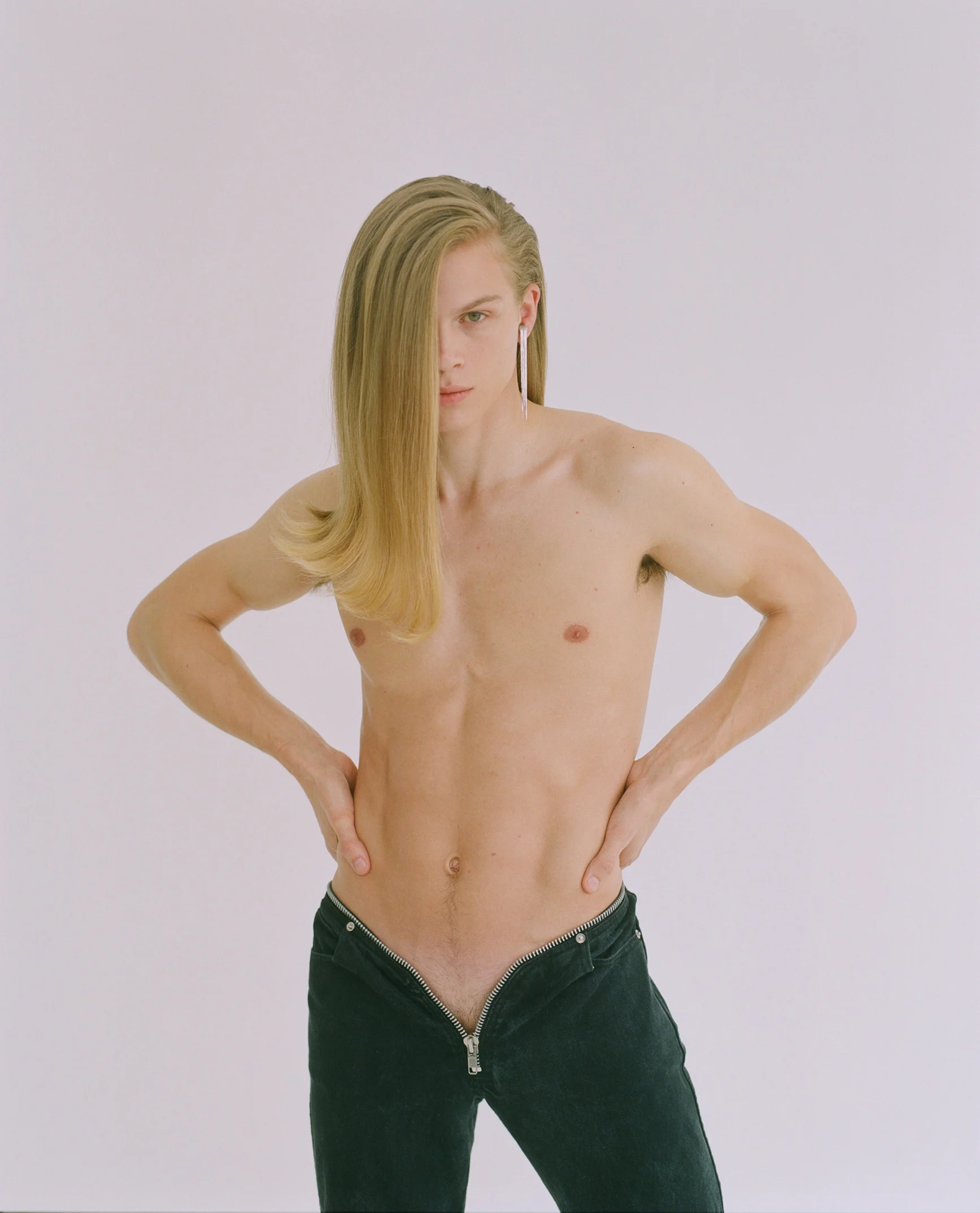IN THE EYE OF THE BEHOLDER
In the design-led arts, the search for beauty unfolds as a constant dialogue between the creator, the created and the receiver.
By RADHINA ALMEIDA COUTINHO
Photography LUKE GILFORD & ERICK FAULKNER
In the world of fashion, architecture, spatial engineering, jewelry and textile design, photography, painting or sculpture, the creation of beauty hovers between one hailed as a worthy pursuit or a fool’s chase of a mercurial idea.
Defining beauty is elusive, but it has never stopped people from trying. The classical ideals of beauty have often been celebrated, but they’ve been just as regularly rejected by proponents of the avant-garde and other counter culture movements through the ages. In the 21st century, the pursuit of beauty has truly evolved into the ultimate expression of individualism. But what does this mean to artists expressing their vision through their work? And what does it mean for those who need to strike that delicate balance between broad appeal and the allure of what speaks specifically to each person?
MATCHESFASHION.COM’S new retail, broadcast and experiential hub, 5 Carlos Place, which opened late last year and is set in an elegant Queen Anne-style townhouse in Mayfair, aims to encapsulate those myriads of expressions under one roof.
Chief Executive Officer of MATCHESFASHION.COM Ulric Jerome, Peter and Philip Joseph, Creative Directors of architectural and interior design firm P Joseph, Nick Hornby, the artist behind the extruded hanging sculpture of Michelangelo’s David suspended within the house’s central stairwell, and Alan Crocetti, whose unconventional unisex jewelry collection is but one example of the individualistic designs one might find at 5 Carlos Place, share their musings on the concepts of beauty and masculinity and their views on sensory expression within an evolving retail experience.
Fashion, architecture, sculpture and art are all disciplines that revolve in some way around how different individuals express and perceive beauty. What makes something beautiful to you?
JEROME: Beauty is something that comes from the right place. Something that is genuine and with passion. And I think ultimately it has to trigger curiosity and conversation.
CROCETTI: There’s a lot of conflict in the word ‘beauty’ alone. I often find beauty in the unconventional, maybe even in things defined as ‘ugly’. However, I also tend to find ugliness in what is conventionally defined as beautiful. I feel like it’s important to pay attention to how things move you in a way.
JOSEPH: I find beauty in balance, proportion, harmony – in a space or an object or image, the combination of materials, forms, elements in perfect balance. Nothing superfluous and all coming together to create a wonderful feeling of rightness and timelessness.
HORNBY: It so depends on context – a line, a pause, a shape, an idea. But I think beauty is an incredibly controversial idea. The Greeks were obsessed with it, and it was entangled with goodness, but in the last 100 years, traditional beauty was turned on its head - rejected and problematized, along with ideals, subjectivity and absolutes.
In your opinion, what qualities make a piece of clothing, a physical space or a sculpture masculine?
HORNBY: I think masculinity shifts in meaning in different periods and different places. Heracles, 18th century aristocrats with wigs and makeup, The Dandy, Superman, RuPaul…today the idea of gender is less binary.
JOSEPH: I think one person’s perception of a feeling of masculinity and what that means to them is very different to another, regardless of gender. I think today, thankfully, gender stereotypes and codes are being swept away and we don’t have to place these limits on creativity.
CROCETTI: We have always been fed ideas of masculinity and femininity from birth, so it’s imbedded in our brains from a young age. I questioned it a lot in my teen years. The whole idea of masculinity being related to strength and femininity to fragility is a patriarchal ideology that unfortunately has lasted for far too long… so I don’t really have an answer to this question.
Do you think the concept of beauty - and masculine beauty in particular - has become more fluid over the years?
JEROME: The real question is ‘what is beauty?’ We actually never mention beauty in our business. We talk about taste, lifestyle, the aesthetic of certain trends but we leave beauty – and the definition of it – to the interpretation of the individual. Personally, I think that we all interpret and define gender in our own way.
CROCETTI: Yes, there’s still a lot of room for growth but I’m happy to see people getting more and more unattached to these past historical values.
5 Carlos Place encapsulates that all important tangible and sensory aspect of luxury fashion and lifestyle experience. How big a role does the sensory aspect play in the perception of beauty, especially in the era of digitization and virtual reality?
JOSEPH: At 5 Carlos Place, we wanted to design the entire experience to feel more like being in someone’s home than a store. We wanted all necessary conventional ‘store’ components to recess into the background to allow the curated contents and pieces such as furniture, artwork, textiles or plants to come to the fore. We wanted to create a space that felt great to be in first and foremost – the focus is shifted and the space feels less transactional, more experiential and curated.
JEROME: We have always tried to emotionally connect with our audience so the balance of physical and digital is very much part of our foundations. Whether this is via fashion shoots, video content, a podcast…all of these enhance the personal approach. The way we try to trigger the sensory aspect is through storytelling, and the beauty for us isn’t about one item or moment but about the story. That’s beauty for us – building a narrative around our products, projects and business.
HORNBY: Yes, I agree - Carlos place is a wonderfully tactile experience – the floor, the banisters, the transparency surfaces. The sensory – as you call it – plays a critical role in my perception: how a viewer empathizes with an object…via its size, material, surface. For example, Brancusi’s Bird in Space – an uncanny object – where the surface has been smoothed to a mirror. A sculpture is entrenched with narratives, a polished surface tells a different story to a rough construction.
How do you seek to create a sensory reaction to your work? Whether it is creating a digital shopping platform or a bricks and mortar space, a sculpture, a piece of jewelry or an art installation?
HORNBY: Your relationship to a sculpture is always in comparison to your own body. When you look at a smooth door handle, you know how it will feel, and what it means…the same is true with a sculpture, you empathize with how it fits against the surface of your body.
JEROME: We are all about sensory reaction. We try to bring exclusive content and events and products, but we want to show it to the world in a very inclusive way which means that the first sensory reaction is that it should be participative and that’s how fashion should be.
CROCETTI: I love working with different artists and medias because my brand is not just a product. It has an identity and a world surrounding it. I have worked with musicians, sculptors, digital artists, set designers and so on. It also makes so much sense to me the idea of taking my pieces out of my own context and integrating with someone else’s. The possibilities are endless and the appeal is magnetic.
JOSEPH: We find we can elicit an emotional connection to our work when we have a strong story to tell. We are always interested to uncover the story of the place and how that place has come to be. Whether that be a building, a street, a neighborhood…we then work on the narrative surrounding the people who will be there. Who are they? How would he or she experience this space? What music do they listen to? What art do they collect? What would they want to feel under their feet?
I believe that the well-designed sensory experience is very much driven by a sensitivity or awareness of who he or she is.
A lot of contemporary art, fashion, photography and architecture re-imagines classical concepts or ideals of beauty from previous eras. Do you think the concept of beauty remains static at its core?
JEROME: We live in a constant cycle and things always come back. Nothing is static. What is the norm today may not be tomorrow and beauty reflects life. The interpretation is different from one individual to another and the nuances change as time does.
HORNBY: Artists often look back in time to various past eras and some historic ideas can seem to transcend their time of creation. We always experience artworks in the present. We are naked to the present.
CROCETTI: Beauty evolves with the ephemerality of life. We are now more than ever able to acknowledge the beauty of ageing, the beauty of diverse forms and deformities. So in this case, it’s a wider understanding of what beauty entails. It transcends acceptance, because it’s not about accepting that people are different but it’s about celebrating everyone’s individuality and that also promotes integration.
Do you think men have dominated the creation of ideals of beauty?
CROCETTI: 100%. The whole idea regarding the aesthetics surrounding gender identity where women are regarded as vulnerable and their only power is linked to sensuality came from men to silence women and make them submissive.
JEROME: I think to say that would also mean that men have dominated the appreciation of beauty and that is not the case. Aesthetic beauty is a by-product of the time, the culture, the community and even the politics of the moment and none of this exists as one gender.
JOSEPH: Of course, across the world ideals of beauty vary hugely and I don’t think men have dominated their creation. Rather I think they are born out of an expression of what individuals, communities, cultures consider at that moment in time to be beautiful.
Do you think men and women perceive beauty in different ways? Is this something you think about when you work and does it influence your creative output?
JEROME: I’ve always felt that beauty is perceived differently by everyone. It’s not down to gender. It’s in the eye and in the senses and in the context of your experience. In terms of our output at MATCHESFASHION.COM we work incredibly collaboratively across teams so the end product whether a shoot, an event or a special collection is not just the result of a single vision.
JOSEPH: In terms of our output at P Joseph as Design Architects we always try to avoid perpetuating gender stereotypes and rather have an unencumbered freedom of expression in the pursuit of beauty which is blind to gender.
CROCETTI: I don’t think men and women perceive beauty in different ways. Individuals do. That’s the subjectivity and the beauty of beauty. It never influenced my work because I don’t design with the intent to appeal to a certain demographic and I design pieces that come from a place that is completely unrelatable to gender norms. My brand is true to who I am as a person and as a designer, for everyone who identifies and appreciates them regardless of gender, sexuality, belief or race.
HORNBY: I think every human perceives the world in different ways. I don’t think about the gender of my audience - only that each person brings their own biography with them - which I can’t control… and that’s great! It’s incredibly enriching and this is where the work is made… in each person’s interpretation.






